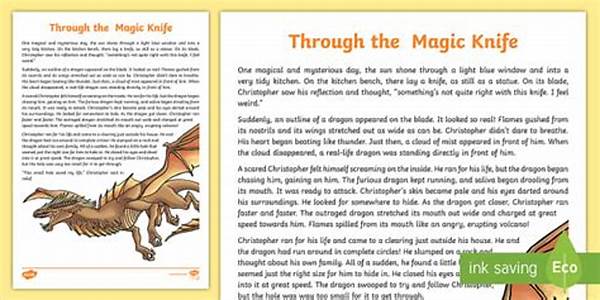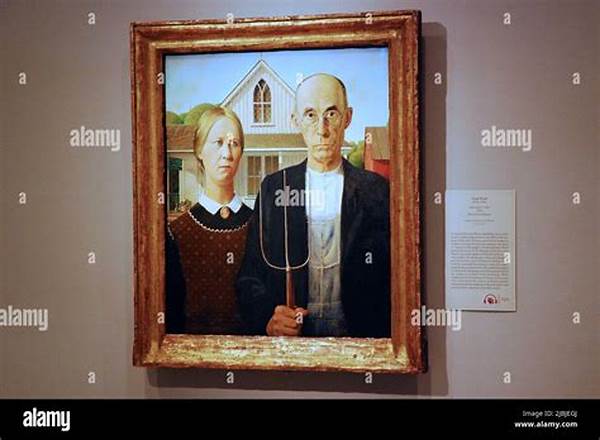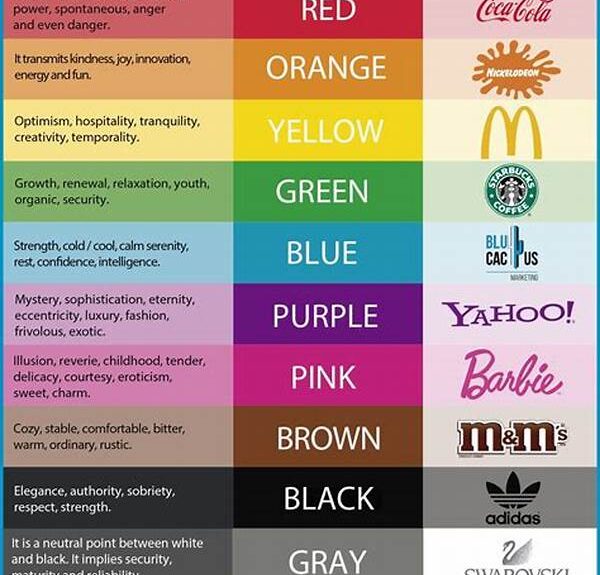Stories have always had the power to captivate our imagination, transporting us to realms where the impossible becomes possible. At the heart of many such stories are magical objects, devices or artifacts imbued with extraordinary powers that influence the plot in intriguing ways. These objects often symbolize the intersection of reality and fantasy, serving as catalysts for adventure, conflict, and resolution. In this exploration, we will delve into the significance of magical objects in narratives and their role in enriching fictional worlds.
Read Now : Art Prints Business Growth Strategies
The Enchantment of Magical Objects
Magical objects in narratives have a unique allure, casting a spell on both characters and readers. These objects are more than mere plot devices; they are symbols of mystery, power, and transformation. Often, they serve as gateways to new worlds or dimensions, challenging protagonists to find courage, wisdom, or compassion. For instance, J.R.R. Tolkien’s “The One Ring” from “The Lord of the Rings” series is not just a trinket; it embodies the temptation of power and the corruption that follows.
In addition, magical objects enrich narratives by providing characters with tools or abilities they wouldn’t possess otherwise. From the invisibility cloak in “Harry Potter” to the Da Vinci Codex in “Assassin’s Creed,” these objects allow characters to perform feats beyond human capacity, thus propelling the storyline forward. By using magical objects, authors can address themes of destiny and choice, exploring how characters react when faced with extraordinary circumstances.
Furthermore, magical objects often carry deep lore and history within the narrative, acting as links to the past or future. They can be remnants of ancient civilizations, gifts from deities, or creations of skilled sorcerers. This layer of history adds complexity to the narrative and engages readers with a world that feels larger and more immersive. Through these enchanted items, authors craft narratives that intrigue and inspire, inviting audiences to ponder the limits of possibility and the nature of reality.
Significance of Magical Objects
1. Symbolism: Magical objects in narratives symbolize profound themes, often representing good versus evil or knowledge versus ignorance.
2. Character Development: They aid in character development, pushing protagonists to grow through challenges associated with the object.
3. World-Building: Such objects contribute to rich world-building by infusing layers of lore and mystery into the setting.
4. Plot Devices: They act as essential plot devices, often setting the story in motion or resolving critical conflicts.
5. Emotional Connection: Characters and readers often form emotional bonds with these objects, adding depth to the narrative experience.
The Journey of Discovery
The presence of magical objects in narratives often signals the beginning of a journey or quest. Whether the protagonist is seeking the object or guided by it, their path becomes marked by trials and revelations. For example, in “Percy Jackson & the Olympians,” the demigod heroes frequently encounter mythical items that aid them on their quests. These encounters serve as pivotal points in the narrative, marking character growth and thematic exploration.
Moreover, the journey often involves deciphering the nature and purpose of the magical object. This process becomes a metaphor for self-discovery, as the protagonist learns not just about the object’s powers, but also about their own strengths and limitations. Through these artifacts, narratives explore the tension between desire and responsibility, questioning what one is willing to sacrifice to achieve their goals.
The Legacy of Magical Artifacts
Magical objects in narratives often carry a legacy that shapes the story’s universe. These artifacts may be passed down through generations, binding families to destiny or uncovering hidden truths. In “His Dark Materials,” the alethiometer is a symbol of truth and insight, connecting the protagonist to a destiny intertwined with the world’s fate. Such legacies enrich the narrative, providing depth and continuity across time.
1. Inheritance: Some magical objects come with a legacy, passed down to shape future generations.
2. Destiny: Artifacts often bind characters to their destiny, revealing their role in the grand narrative.
3. Hidden Truths: They can reveal hidden truths about the universe or the characters’ personal histories.
4. Interconnectedness: Magical objects weave connections between different timelines and characters.
Read Now : Art Commission Payment Terms
5. Moral Dilemmas: They can present moral dilemmas, challenging characters to make difficult choices.
6. Power Struggles: Often, these objects become focal points of power struggles within the narrative.
7. Transformation: Contact with magical objects often leads to transformation, physically or emotionally.
8. Mystique: The mysterious nature of these artifacts draws readers into the narrative.
9. Protection: Some items serve to protect characters, becoming symbols of safety and hope.
10. Challenge: They pose challenges that test the characters’ resolve and ingenuity.
The Impact on Character Arcs
Magical objects in narratives profoundly impact character arcs, often serving as catalysts for change or growth. Characters interact with these artifacts in ways that reflect their inner struggles and desires. For instance, in C.S. Lewis’s “The Chronicles of Narnia,” the magical wardrobe serves as a portal to another world, challenging the Pevensie siblings to confront their fears and find courage. This interaction with the magical object propels their character development, shaping their journey from naive children to heroic figures.
Each character’s relationship with the magical object is unique, reflecting their individual journey and growth. As the story progresses, the object can reveal flaws or virtues, often leading the character towards a crucial decision or sacrifice. Magical objects in narratives are therefore not just physical items but complex symbols of the character’s internal and external battles. They provide a mirror for self-discovery, as characters face themselves while navigating the enchanted complexities of their world.
Power and Responsibility
Magical objects in narratives often carry themes of power and responsibility. When characters come into possession of such objects, they must grapple with the moral and ethical implications of their newfound abilities. In J.K. Rowling’s “Harry Potter,” the Elder Wand serves as a powerful symbol of the burden that comes with ultimate power. Characters must decide whether to use the object for personal gain or the greater good, a decision that often defines their legacy within the story.
The tension between power and responsibility is a recurring theme in narratives involving magical objects. Authors use these artifacts to explore the moral gray areas, challenging characters to balance their desires with their duties. The choices characters make reflect their values and priorities, illustrating the complex nature of wielding power. Through these narratives, readers gain insight into the nuanced dynamics of power, responsibility, and integrity.
Conclusion: The Enduring Allure of Magical Objects
Magical objects in narratives hold an enduring allure that captivates audiences across generations. These enchanted artifacts serve as windows into worlds where the ordinary becomes extraordinary and where characters are tested in profound ways. From ancient legends to modern fantasies, the presence of magical objects enriches storytelling, creating worlds where imagination knows no bounds.
In summary, magical objects are integral to narratives, weaving a tapestry of wonder and intrigue that invites readers to embark on transformative journeys. They challenge characters to evolve, confront their deepest fears, and triumph over adversity. Ultimately, magical objects are timeless symbols of the human spirit’s capacity for growth, discovery, and redemption. Through their magic, stories become timeless, resonating with readers who yearn to explore the infinite possibilities of imagination.



